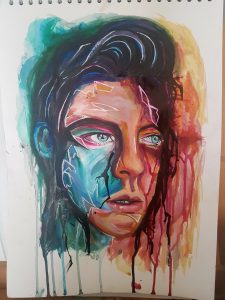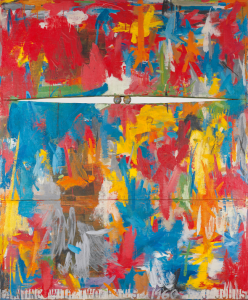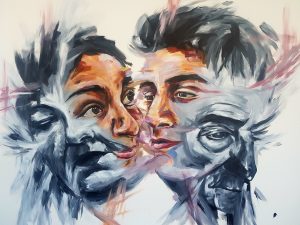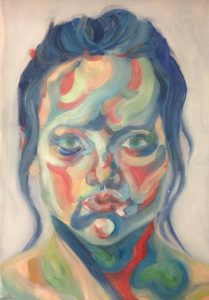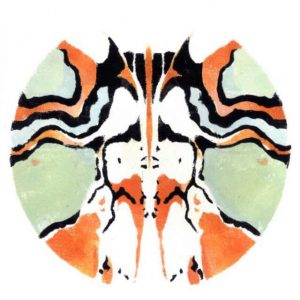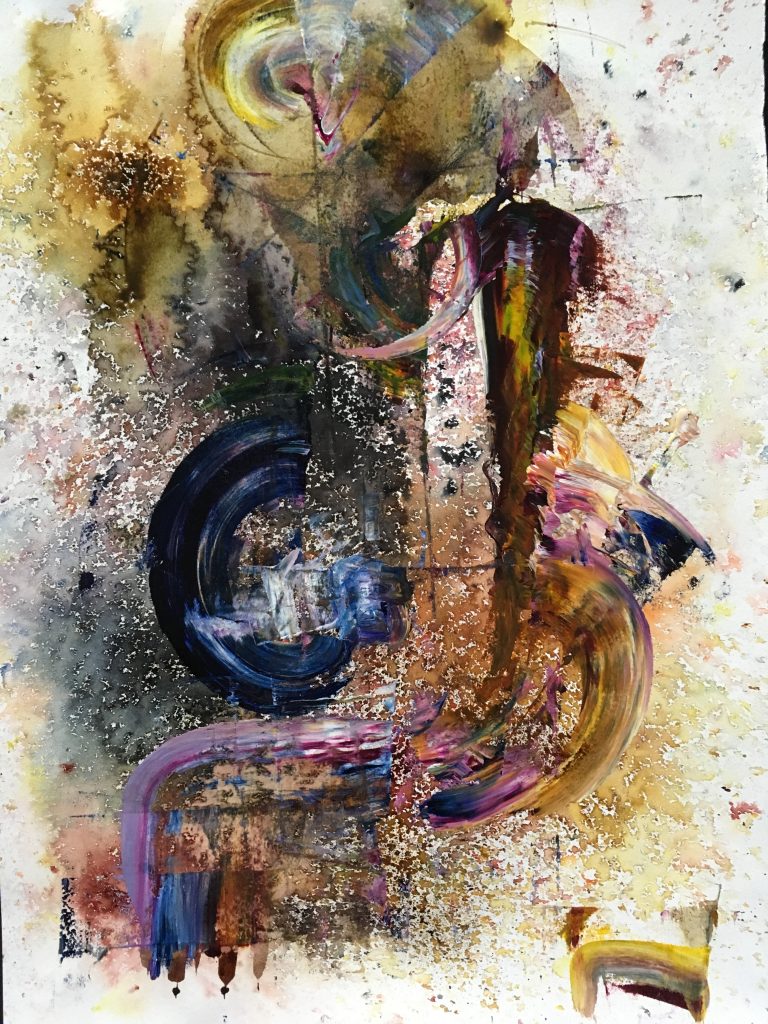
Understanding what I cannot accept Tomi Olumide 2017 Acrylic and Dye pigment on paper 29.2 x 41.8cm
I worked on this painting during my summer holiday in Lagos Nigeria. Working on this in my small room/ studio posed a big health and safety issue only greatly concerned with after the entire process. at first because of the fumes which came from the printing ink and the dissolve of it with petrol, as a substitute for white spirit, which was very effective, however served as a great health and safety risk, but it was worth it. I would say the series of prints and paintings which I did on that day, were a way to get relief from the stresses life had brought, and the painting was a happy accident, which I was able to personally connect with intrinsically. The need to be in solitude, was the drive and influence in experimenting with this process. The stress and chocking factors of feeling stuck, pushed me to exert my frustration through a medium which I was familiar with, especially one which I had become fond of because I during my 2nd year college FMP.
Due to the mass production of the other works within it’s’ collection, I sped through the process of being gentle, precious with what I intended to create and spontaneously created the textures of the works with the aid of a wooden and rubber panelled squeegee, over a background of ready-made dye pigmented dry paper. I believe the fast paced work ethic helped the work turnout the way it did because if I did not work in such a manner it probably would have had a different result. I deem the entire process a making of erratic art, turned into a happy accident. The creation of these works was led by sentimentality, thus neglecting the objectivity of including symbols of significance, to show purposefulness and meaning relating to subjects not indulging in vanity and self-pity.

